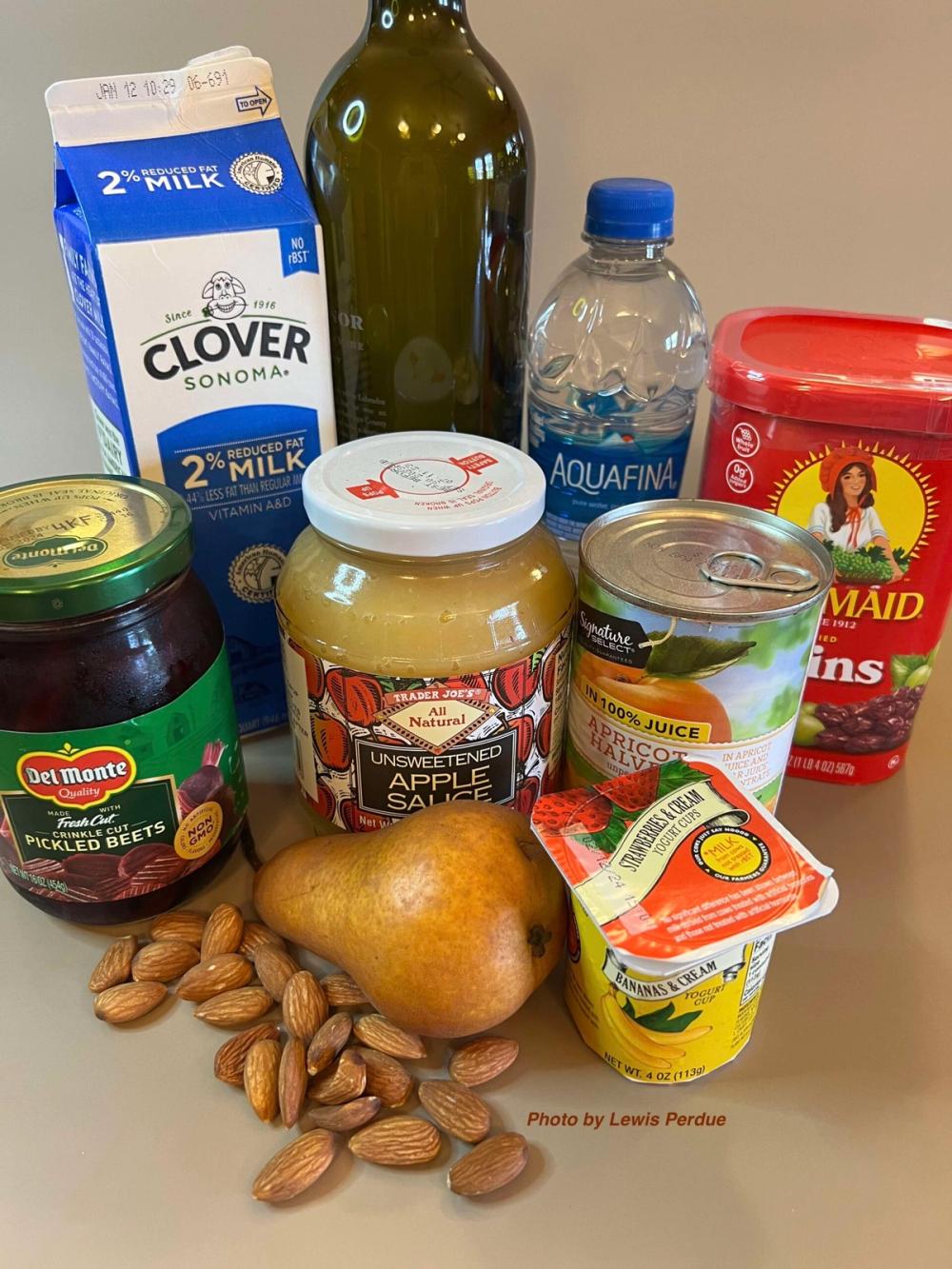Lewis Perdue analyses and questions the carcinogenic risks of alcohol in this detailed analysis.
THE BIG PICTURE — A Dry January or Mediterranean Diet can be a useful exercises for those who feel they have need to pave a more healthy path for the year.
However, if you’ve embarked upon either (or both) of these activities, you’ll need to expand your forbidden list not only beyond wine and other alcoholic beverages, and include apples, coffee, cheese, yogurt, chicken, and innumerable other foods as forbidden. (see partial list below).
This is because government regulators and alcohol control organisations — despite having no causal human evidence — insist that a compound commonly found in AlcBevs as well as in many healthy foods causes cancer.
Ironically, that compound is acetaldehyde (AAH). And according to a scientific paper in the U.S. National Library of Medicine, AAH is present in many everyday foods and non-alcoholic beverages including:

There are levels of acetaldehyde the compound linked to cancer in alcohol in a vast amount of the so called healthy food items we all eat everyday, says Lewis Perdue
- apples,
- broccoli,
- coffee,
- cheese,
- yogurt,
- milk
- grapefruit,
- grapes, lemons,
- mushrooms,
- onions,
- oranges,
- peaches,
- nectarines,
- pears,
- pineapples,
- raspberries,
- strawberries,
- cranberries,
- sour cherries,
- mangos,
- cooked beef, chicken, and fish.
- condiments like chili-paste,
- fermented and pickled vegetables, and
- drinks such as kombucha.
AAH also occurs in the essential oils of:
- alfalfa,
- rosemary,
- balm,
- clary sage,
- bitter orange,
- camphor,
- angelica,
- fennel,
- mustard and,
- peppermint.
AAH also leaches into the contents of plastic containers and bottles, and is found in cannabis smoke.
QUICK VIEW OF THE LANDSCAPE — The scientific journal Toxicological Research compared a set of AAH concentrations:
- Alcoholic beverages, the content of AA was 1,043.57 to 40,607.02 parts per billion (ng/g).
- Alcohol-free beverages, the content of AA was N.D (Not Detectible) to 20,061.48 parts per billion.
- Instant coffee 31,200 to 35,510 parts per billion
- Roasted coffee 1,150 to 40,140 parts per billion
- Fruit was in the range of 483.42 to 19,530.53 parts per billion, and
- Dairy products, were N.D to 1,525.18 parts per billion.
An additional paper listing more foods containing AAH can be found at this link.

Lewis Perdue says there are many questions that have not been answered by alcohol control organisations and their health claims about alcohol
THE BIG HITCH — Either THOSE ordinary foods, above, are unexpectedly UNhealthy, or their AAH concentrations are on a par with alcohol. More significantly, the total level of daily exposure to AAH is far higher with “healthy” foods because people consume a greater quantity of them than with alcbevs.
If AAH were to be a concern of the U.S. government’s National Health and Nutrition Examination Survey (NHANES) — which extensively monitors the American population’s exposure to hundreds of chemicals — it would show up in the site’s list of aldehydes. But it does not, thus an indication that AAH is not a chemical of concern. See for yourself: Tables and searches here: Biomonitoring Data Tables for Environmental Chemicals.
THE TRUTH MAY BE OUT THERE — Is AAH carcinogenic? Not according to published scientific studies, including an October 2023 paper: Acetaldehyde as a Food Flavoring Substance: Aspects of Risk Assessment — which challenges that fundamental assertion.
This is further significant given that none of the government or alcohol-control web sites cite — or link to — any causal human studies to indicate that that AAH is harmful to humans in the concentrations and quantities found in everyday foods and beverages of all types. That’s because there are no such causal studies In addition, an exhaustive literature search on Google Scholar failed to find references indicating that ethanol causes cancer other than by its conversion to AAH.
In the world of quality, peer-reviewed scientific journals, the failure to cite relevant and significant citations can be grounds to retract a paper.
THE BIG DISCONNECT —In the United States AAH is commonly added to many foods and beverages because the U.S. Food and Drug Administration considers it an ingredient that is GRAS: “Generally Recognized As Safe . (use CTRL+F to search the list at that link).
Acetaldehyde is also a permitted food additive in China and a designated food additive in Japan.
For its part, the FDA states that acetaldehyde is considered a safe additive in food products, and is used to impart a green apple taste sensation.
WHY IT MATTERS

More people are questioning how much they drink and the damage it could be doing to them
Touting AAH as a carcinogen distracts alcohol safety efforts away from inebriated driving, spousal abuse, alcoholism, and the well-documented adverse health effects of heavy drinking.
Despite that, the U.S. Centers for Disease control, and other “no safe level” advocates — insist that AAH causes cancer by damaging your DNA and prevents your body from repairing the damage. This is despite the presence of a swift and efficient human metabolic process that rapidly converts AAH to a harmless compound.
Among many references, this 2023 published paper, prepared for the German government, notes that AAH is so quickly metabolized that it’s not around long enough to cause harm: “Since acetaldehyde is rapidly and efficiently metabolized after oral intake, it seems unlikely that acetaldehyde present in food is systemically bioavailable in the organism for a sufficient period of time.”
It is important to acknowledge that, while most humans have a quick and efficient metabolic pathway that rapidly converts AAH into a harmless compound, some people have an easily recognised genetic variation — commonly called “The Asian Flush,” that curtails this ability and poses elevated risks.
PRATFALL AHEAD —By choosing AAH as its evil cancer villain, government agencies and other alcohol control advocates have figuratively slipped on a nutritional banana peel.
From: “Quantitative Determination of Acetaldehyde in Foods Using Automated Digestion with Simulated Gastric Fluid Followed by Headspace Gas Chromatography” – https://www.ncbi.nlm.nih.gov/pmc/articles/PMC3124883/
ANOTHER BIG TRAP — WEAK SCIENCE
The “AAH causes cancer” meme persists because of the absence of any controlled clinical human studies that indicate a causal relationship between alcohol and cancer.
While there are studies of AAH in rats or in vitro (test tubes, and other lab apparatus), more than 90% of murine (rodent)-based trials of promising pharmaceuticals fail to receive government approval because of poor performance in human trials.
Additionally, published studies on humans and alcohol published so far are the result of a type of study called “observational.” These types of studies do not provide causal data, but offer links, connections, indications, or other potential connections. Observational study designs such as case controls and cohorts have a lower strength of evidence.
Significantly, the same “causal proof versus association” situation also exists with observational studies that indicate no harm, or even the possibility of health benefits from moderate consumption. The so-called “French Paradox” was found lacking due to its own lack of causal studies.
WAITING FOR TOXIC SANTA — Sometimes regulators will hedge their uncertainty. For example, the U.S. National Toxicology Program (NTP) has issued an equivocal opinion by stating that, “Acetaldehyde is reasonably anticipated to be a human carcinogen based on sufficient evidence of carcinogenicity from studies in experimental animals.” Anticipation is best reserved for children waiting for Santa.
DRIVING THE NEWS: WEAK SCIENCE — The International Agency for Research on Cancer (IARC) — a unit of the World Health Organization — issued a poorly sourced paper based on weak science at the end of December 2023 adding fuel to the fire.
Given its imprimatur by the WHO, the IARC paper was picked up in a sensational manner by the international media just in time for New Year’s celebrations.
That paper — like other “no safe level” articles — was based on a hodge-podge of review previous studies, that were non-causal.
Indeed, the IARC acknowledged on the third page of its paper that the strength of evidence of five of the paper’s sections were “inadequate” or “limited.” The other two that they deemed “sufficient” were observational studies and, by definition, not causal. Most importantly, Cohort and Case-Control studies are “observational” and do not yield causal data.
More on strength of evidence here: Grading The Strength Of Evidence (Credibility & Trust) + Complicating Factors For Different Types of Human Studies.
Despite its lack of causal studies, the paper received wide acclaim in the global media just in time for New Years celebrations, despite the fact the science cited did not justify the conclusions of causality. It is also significant that the IARC paper did not identify which cohort or case-control studies were applicable to each of the specific cancer site categories.
STATE OF THE NATION: CLOWN SHOW — The CDC Finds Acetaldehyde Carcinogenic. NTP Says Maybe. FDA Says It’s Safe. NHANES Does Not Care
The National Health and Nutrition Examination Survey — NHANES — is a series of ongoing assessments of the U.S. population’s exposure to environmental chemicals. It monitors hundreds of chemicals, including 12 aldehydes — none of which is acetaldehyde. This indicates that it is not a chemical of concern. Tables and searches can be found here here: Biomonitoring Data Tables for Environmental Chemicals.
Because NHANES relies primarily on analyses of urine samples for chemical analysis, AAH may not be included in its data because its rapid metabolism leaves no detectable presence there.
CAUTION LIGHT — Drinking too much too fast can outpace the limits of metabolism (about one standard drink per hour) may allow acetaldehyde to accumulate. That could cause hangovers.
TAKE AWAY — Healthy people have evolved a sturdy metabolism that makes quick work of acetaldehyde. Well-informed people realize that AAH lurks in their morning yogurt, and many, many other places.
- My thanks to David Morrison for his assistance with this article. The article author declares no conflicts of interest.
- Lewis Perdue is chief scientist and chairman of the Center for Research on Environmental Chemicals in Human.









































